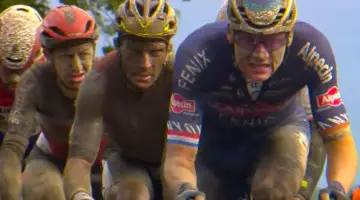
A line of Belgians, with a Dutch rider holding on, possibly wondering where there power was coming from. © Thomas Van Bracht
Some of you—at least, those who follow road in addition to cyclocross—may remember a couple of years ago when allegations were made that Fabian Cancellara was racing the Paris Roubaix classic with a motor. Not his legs, though they can accurately be described as having some serious horsepower, but an honest-to-goodness motor in his bicycle. Sound crazy?
With new innovations like electronic shifting, is it that far-fetched? We certainly hope so, but the allegations served to start a bit of a witch hunt for any cyclist who was “mechanical doping.”
However, back in 2010 when the story came out, UCI’s technical chief, Jean Wauthier, was quoted in VeloNews as saying, “Certainly we’re going to have to speed up our research so we can scan all competition bikes in a quick and efficient way. Up till now, such controls simply haven’t been used.”
It seems that they’ve found a way, and even the world of cyclocross was put under the microscope this weekend as bikes were checked with mini-cameras inserted into frames, looking for motors, according to Het Nieuwsblad. No motors were found, but we’ve heard rumors they found spiders, orange grease, stagnant water, and in Stybar’s case, traces of Koksijde sand, from the last World Championships he entered.
The mechanical doping checks don’t happen often, in fact, Worlds was the first time since Danilo Di Luca made claims about mechanical doping earlier this year, but thankfully, nothing was found.
Might we see a new authority formed to combat this possibility? MADA anyone?




























